The Vegan Traveler: Bhutan
In August 2025, we started an epic seven-week trip in Bhutan and Nepal. Our starting point was Bhutan.
When we said we were headed to Bhutan, one person asked “why do you want to go there?”
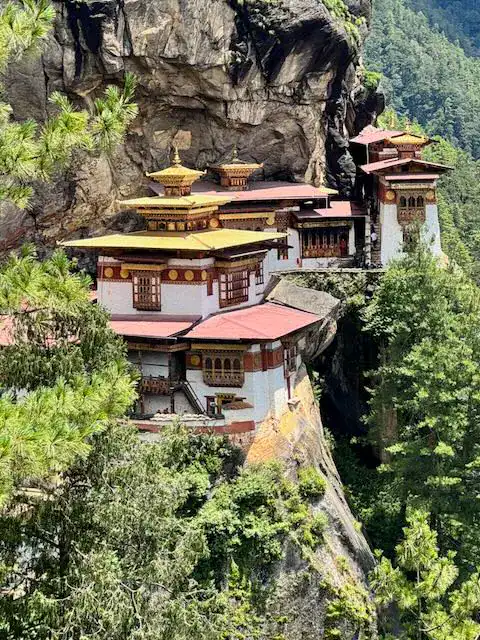
A fair question. The short answer was that we knew several people who had gone and loved it. The longer answer was that we were fascinated by this tiny Himalayan country, which has preserved its national heritage and customs, and evaluates Gross National Happiness (GNH) over GDP. The country has a strong ecological consciousness: there is almost no litter and by law 60% of the country must remain under forest cover. What we didn’t expect was the spectacular beauty everywhere we went, and the deep spiritual nature of the people there.
Another factor in our selection of Bhutan is that our favorite vegan travel company, Vegan Travel Asia, started running trips there last year. We’ve loved our previous trips with them: the combination of cultural immersion, supporting their mission, and great vegan food.
Bhutan is a constitutional monarchy. While the constitution guarantees freedom of religion, about 75% of the population is Buddhist and Buddhism is the national religion. We saw little evidence of other religions (we did not go to the far south of the country – bordering India – where there is a larger Hindu population).
I won’t go into every detail of our trip: just the highlights. You can see the full itinerary on the Vegan Travel Asia website. However, there are aspects of the trip, and of Bhutanese culture, that stand out.
Some highlights:
- The airport (in Paro) is probably the cleanest, calmest international airport you’ll ever see.
- The capital city of Thimpu is amazingly calm and quiet. It has the distinction of being the only capital city with no traffic lights. Instead, traffic is directed by white-gloved police officers. Apparently they experimented with traffic lights in the early 2000s, but the people didn’t like the lights so they were removed.
- Bhutan is the least commercial place we’ve ever been. There are no billboards. Large scale outdoor advertising is prohibited by law because it is considered visual pollution.
- Traditional dress is the norm. In fact, traditional dress (gho for men and kira for women) is required in government buildings, schools, and formal occasions.
- Buildings in Bhutan must follow the traditional architectural style – yes, even new buildings.
- Archery is Bhutan’s national sport and you see it everywhere.
- Bhutan has a “high value – low impact” tourism policy. A sustainable development fee of about $100 per person per day goes toward education, healthcare, and infrastructure. You generally can’t go to Bhutan on your own – you must have a licensed guide. This helps prevent mass tourism and guarantees a culturally sensitive experience. We were there during the off season and we saw almost no other tourists outside of Thimpu until the end of the trip.
- Bhutan’s largest export is hydroelectric power. Also, Bhutan is one of the few carbon negative countries in the world.
- Over 10% of the population is monks or nuns. Monasteries play a big role in daily life, as do Buddhist festivals.
- The people we met were incredibly kind, helpful, and proud of their culture. Bhutan’s culture is calm and peaceful: it was a breath of fresh air.
- The Tiger’s Nest monastery (Paro Taktsang) is a destination for the vast majority of visitors to Bhutan. While some people only go as far as the parking lot and others go to the cafe about half way up, as significant number hike all the way to the monastery. We were well-prepared for the hike, but for those who are not prepared it can be quite challenging.
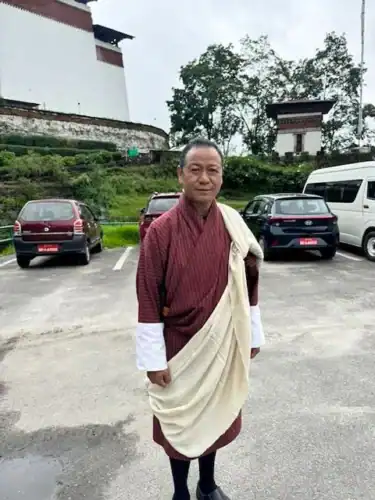
Where were you?
This map shows Bhutan and the places we stayed outlined in red. We traveled through the center of the country from west to east and back again.
We flew into Paro, stayed at the Forest Boutique in Thimpu (the capital), drove to the Phobjikha Valley (where the black-necked cranes migrate) for one night, and went to our furthest east point in the Tang Valley where we stayed at Ogyen Choling Heritage House for an amazing three nights.
Going back west we stayed a couple nights in Trongsa, one night in Punakha, then passed through Thimpu as we finished our tour in Paro.
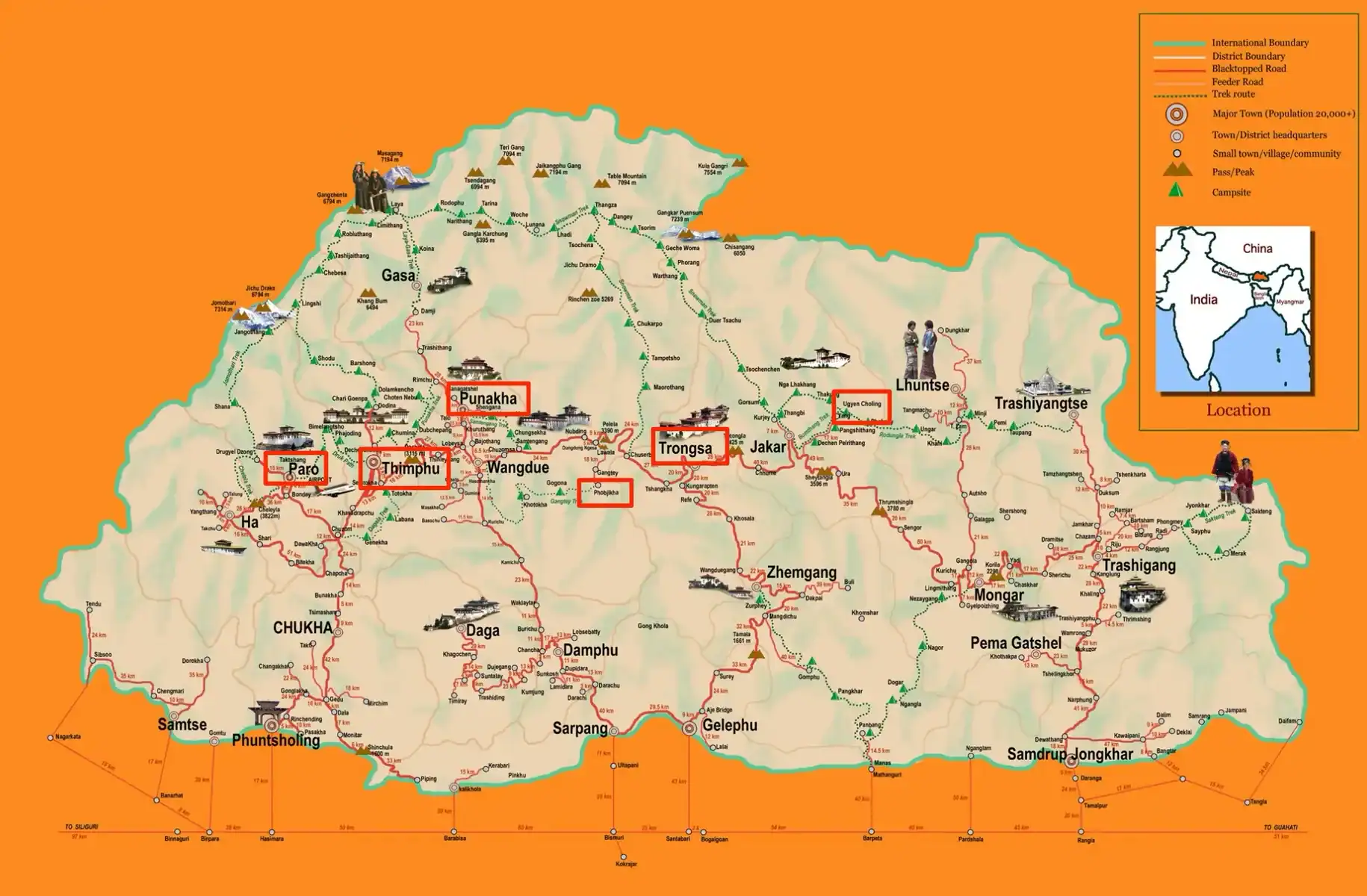
Thimpu
We started our trip with a visit to the Zeus Nakulu dog shelter. This wasn’t on the tour itinerary, but our group wanted to go before the tour started.
Highlights in Thimpu included the post office museum (really!), the local market, a visit to the Gross National Happiness center, a traditional massage, and a cultural program featuring song and dances from different parts of Bhutan. We were also invited to dinner at the home of our guide, Tshetem, and his wife Laxmi. You can learn more about them on the Sacred Himalaya Travel website.
It was mushroom season and we had amazing mushroom dishes throughout our tour. We also learned to make a vegan version of Ema Datshi, Bhutan’s national dish, which is basically chilis in a cheese sauce (ours was a cashew cheese sauce). They love their chilis in Bhutan, and some kind of chili is served at every meal.
Phobjikha Valley
The Phobjikha Valley is known primarily as the migration site for black-necked cranes, which migrate from Tibet. We weren’t there for the migration, but we did visit their sweet little museum and learned about these beautiful birds. It’s a big deal in Bhutan with a festival in November.
Our visit was during potato harvest time and we walked past several people working in the fields. We did a nice hike up to a monastery and had a meditation class, and finished our stay with a wonderful soak in a traditional hot stone bath.
Tang Valley – Bumthang
Our furthest distance from the capital of Thimpu was the Tang Valley in the Bumthang district. Our stay was at the extraordinary Oygen Choling Heritage House, the home of a noble family. The family has traced their lineage back to the 14th century. Our host, Kunzang Choden, is the 21st generation and was the first Bhutanese woman to publish a novel in English.
Highlights of our time included hiking, visits to monasteries, meditation in the home’s temple, a visit to their onsite museum, lunch at a neighboring farmhouse, a prayer flag ceremony, and a flute concert from the property’s night watchman (see video at the bottom of the page).
As we left the Tang Valley, we stopped at a farmhouse homestay for lunch where they taught us to make buckwheat noodles. We also stopped at a the Pema Choling nunnery.
Trongsa
Trongsa is considered the heart of Bhutan. Not only is it the gateway between east and west, but it has the largest dzong (fortress/monastery) in Bhutan. It was the seat of the Wangchuck dynasty before they became the ruling monarchy of Bhutan.
We toured the town, the dzong, and the excellent watchtower museum. We also stopped for tea at a lovely cafe, complete with waterfall.
Punakha
Punakha is the former capital of Bhutan, and it’s dzong is one of the most beautiful. The only time we saw many tourists in Bhutan was at the Punakha dzong.
The dzong is where Bhutan’s kings are crowned, where the current king and queen were married, and is the winter residence of the Chief Abbot of Bhutan (it’s lower elevation and warmer in Punakha than in Thimpu).
The suspension bridge is one of the longest in Bhutan at over 230 meters.
The Chimi Lhakhang fertility temple is famous for its fertility blessings. It was built to honor
Lama Drukpa Kunley, known as the “Divine Madman.” There are many shops selling phallic handicrafts, and visitors to the temple are blessed with a wooden phallus. Yes, we went in for our blessing,
Paro
The main attraction is Paro is the hike to the Tiger’s Nest monastery: it’s an icon of Bhutan. Our guide told us that about 80% of visitors to Bhutan go to the monastery, though many only go as far as the parking lot.
The hike is on a well-maintained trail, but toward the monastery there are many stone stairs. Overall it’s a 4 mile (6.5km) round trip with an elevation gain of 1700 feet (520 meters). There’s a cafe at the halfway point. We had lunch there on the way down, but many people stop the hike there.
The hike is moderate to strenuous. We hike in Guatemala and are used to steep hikes at altitude, so we didn’t find it that difficult. However, many people on the trail were struggling.
Things to Consider When Planning Your Visit
A few things you might want to think about when planning your trip to Bhutan:
- In most cases you must travel in Bhutan with a guide. Your guide will make all the difference in your experience and will also take care of getting your visa. As vegans, we absolutely love traveling with Vegan Travel Asia. Our guide, Tshetem, has a travel company call Sacred Himalaya Travel I recommend if the vegan tour isn’t your thing.
- The elevation of Paro is 7200 feet / 2200 meters. Thimphu is a little higher. The highest elevation where we stayed was Ogyen Choling at 9500 feet / 2900 meters. The road crosses Dochula Pass at 10,171 feet / 3100 meters. If you have issues with altitude and, especially if you’re coming from sea level, you may want to consider some time to acclimate or even medication. We live at 5100 feet / 1500 meters and had no problem with the altitude, but others in our group did suffer a bit.
- Tourists are not required to wear traditional Bhutanese clothing, but there are places that rent it if you want to get in the spirit. Do remember to dress conservatively when you visit monasteries.
- The $100/day sustainable development fee makes Bhutan more expensive than many Asian destinations. In our experience, the cost was completely worth it.
Here are a few videos from the trip:
Share this post!

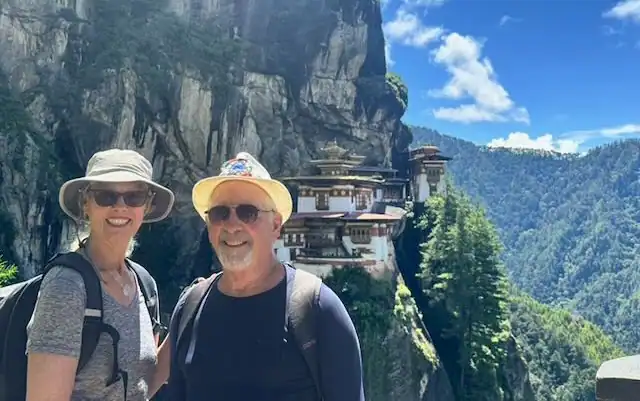
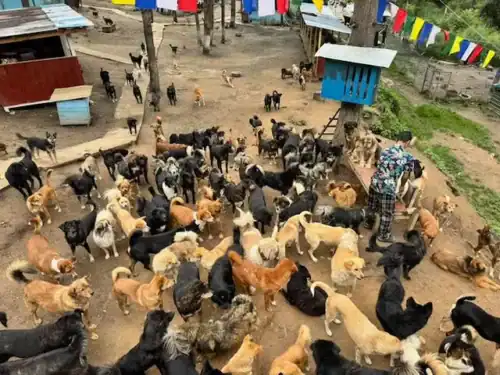
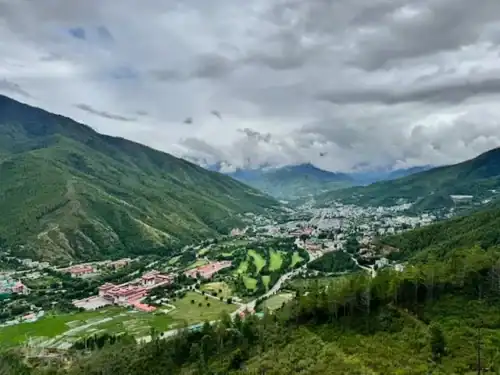
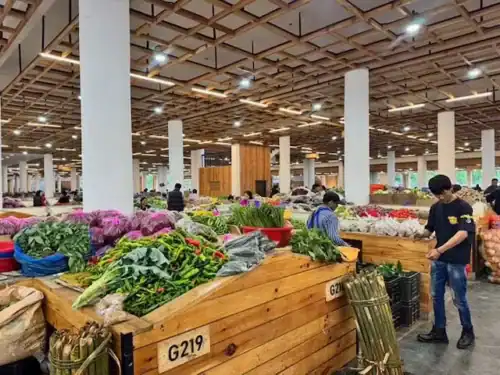
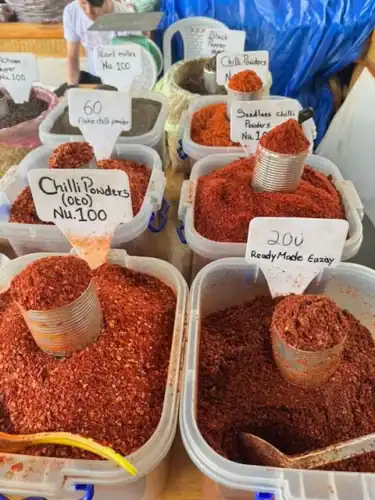
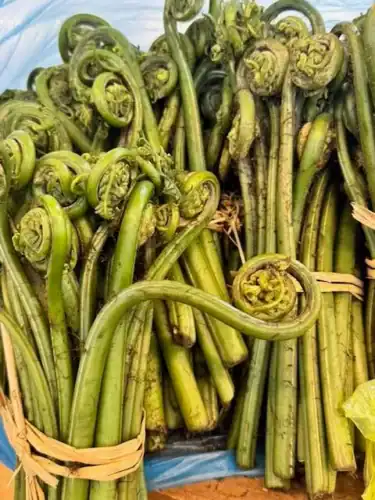
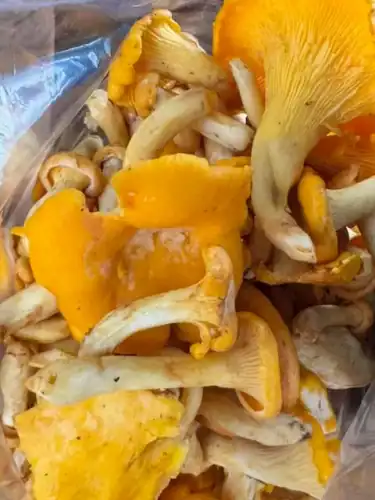
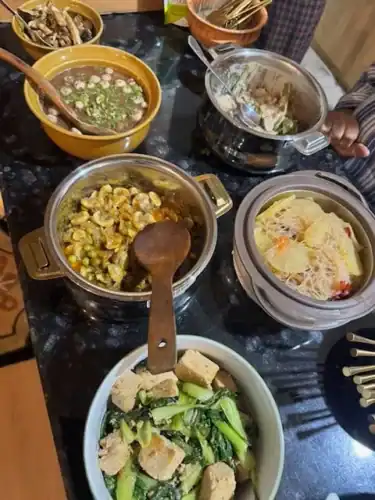
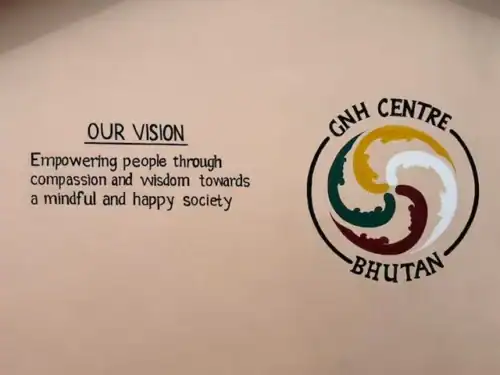
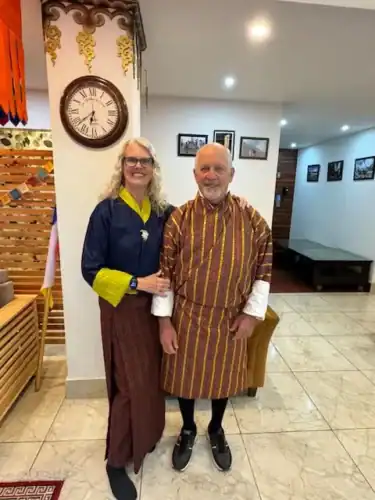
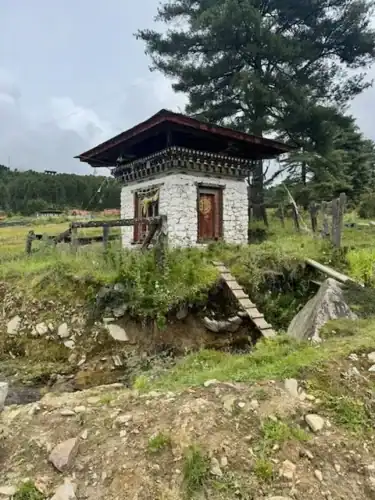
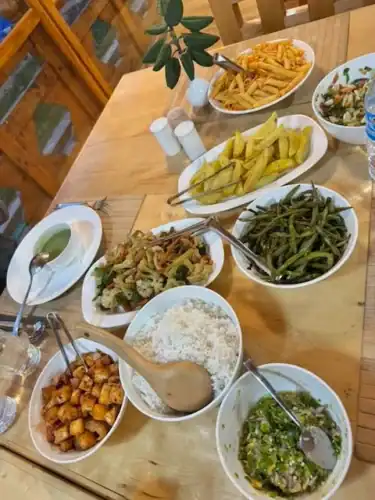
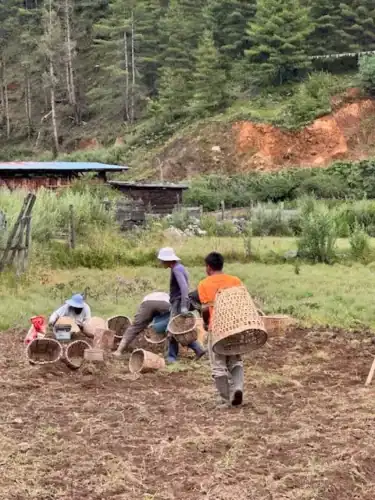
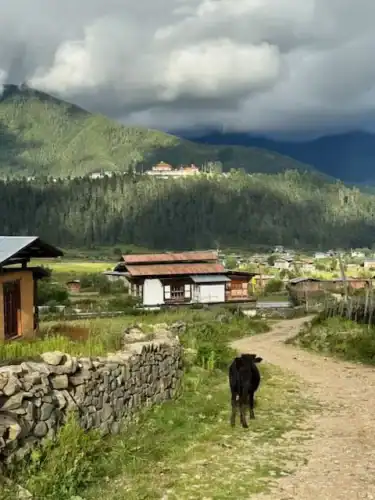
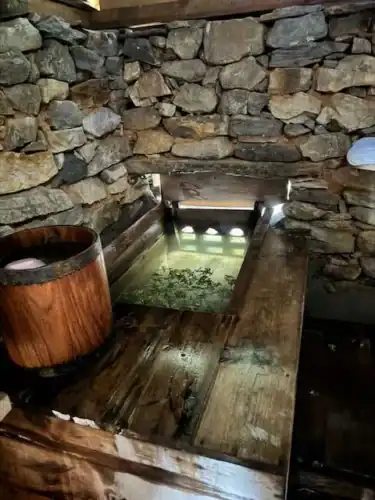
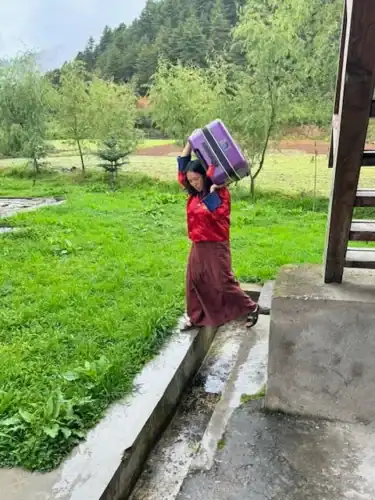
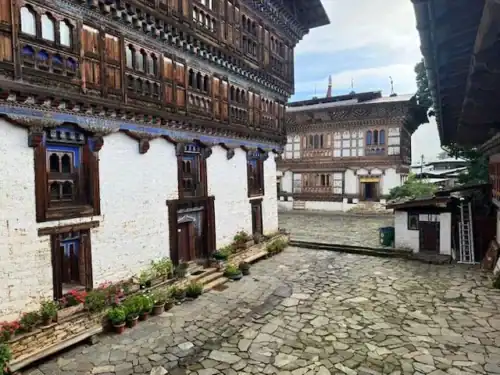
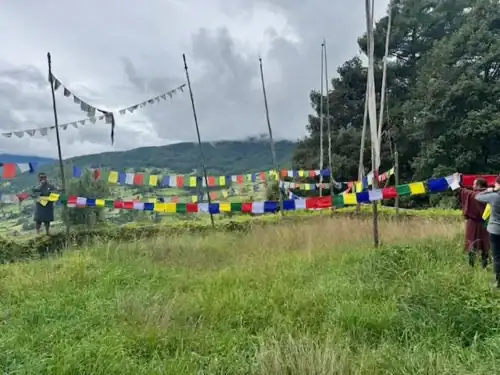
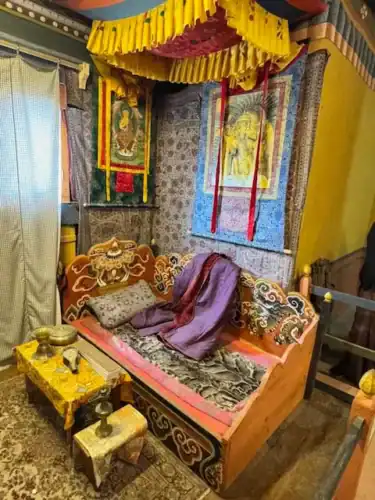
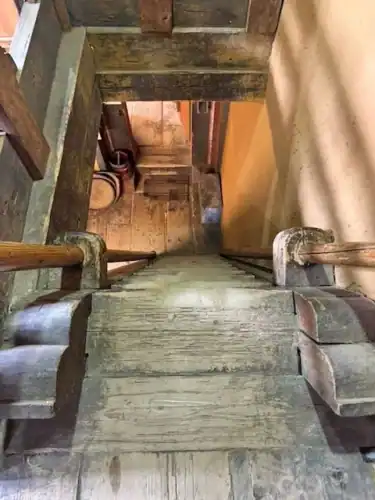
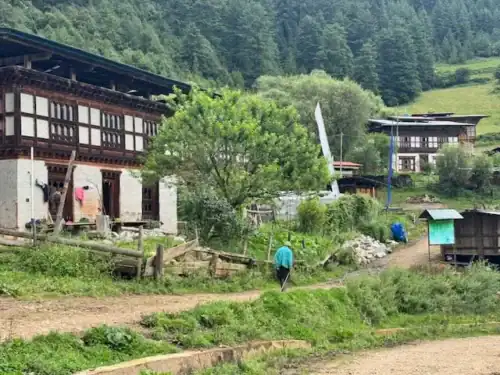
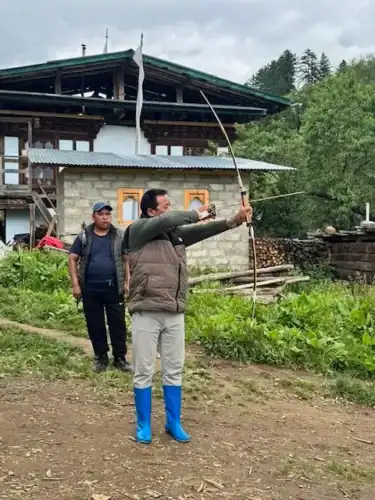
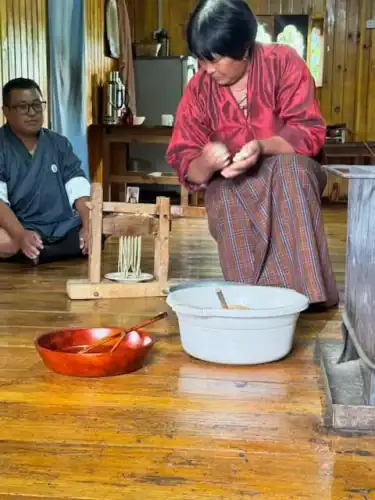
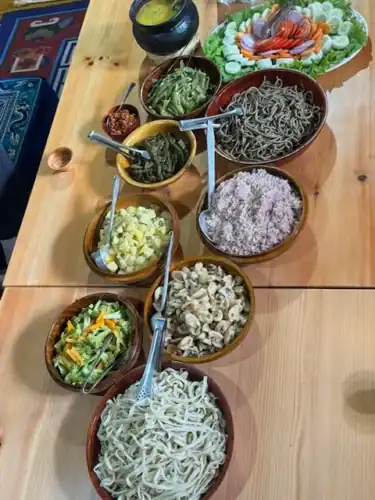
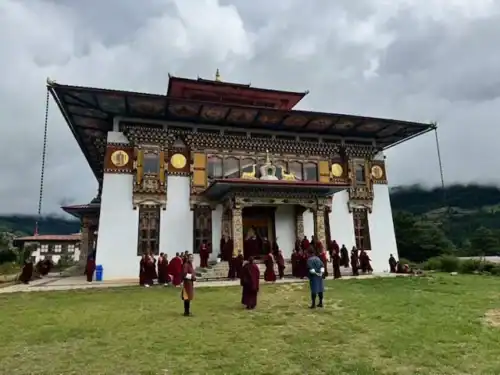
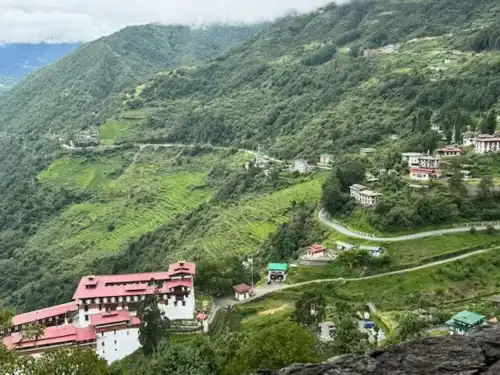
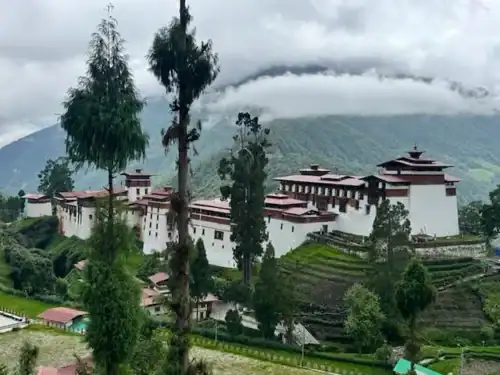
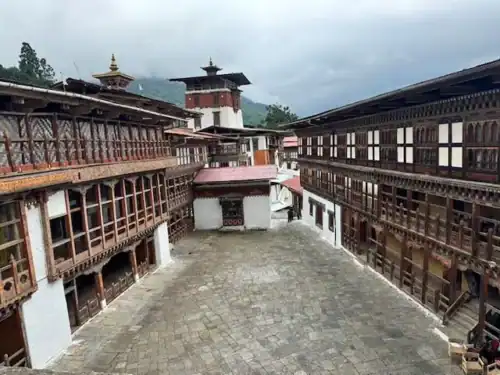
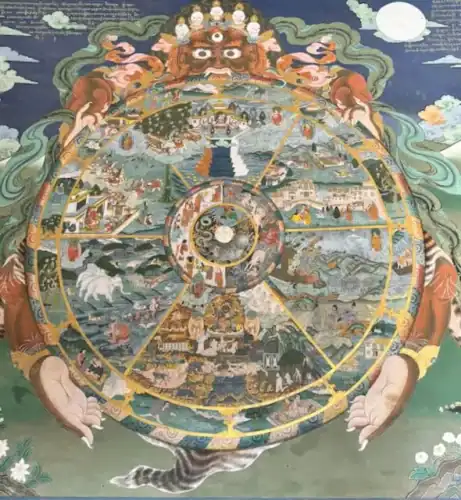
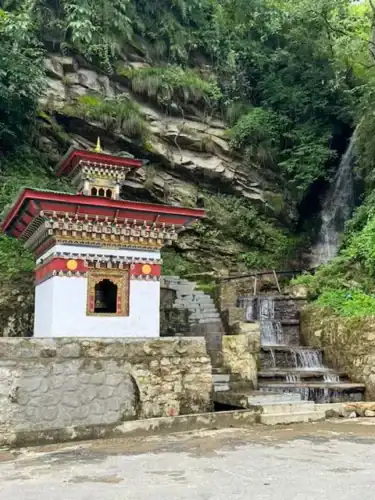
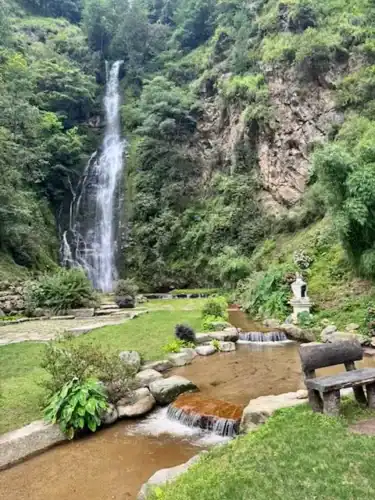
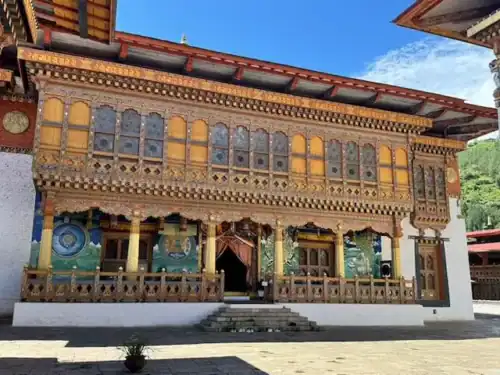
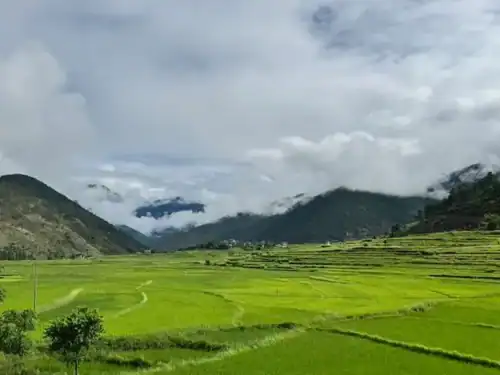
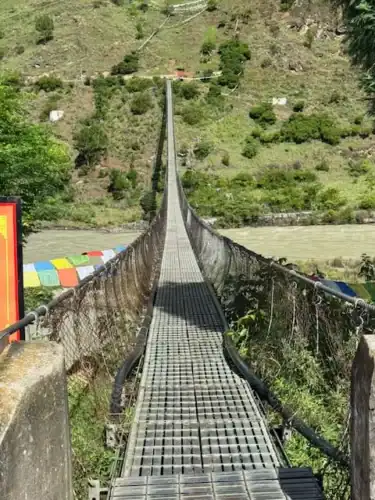
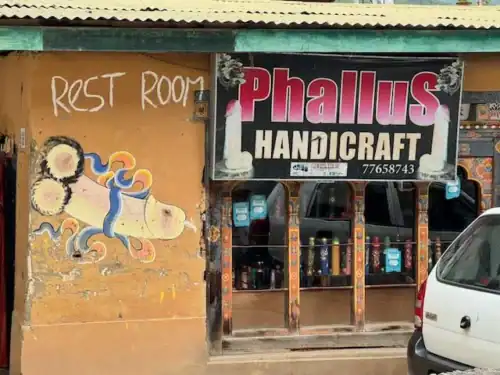
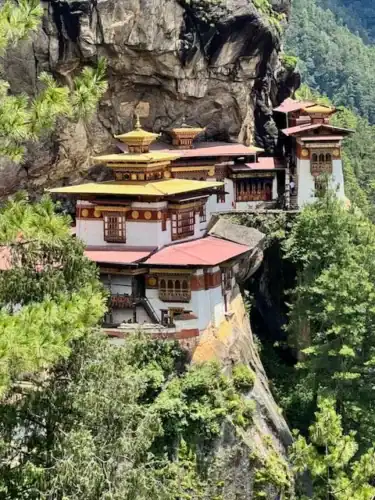
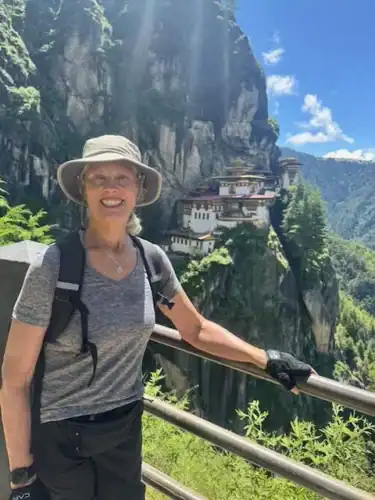
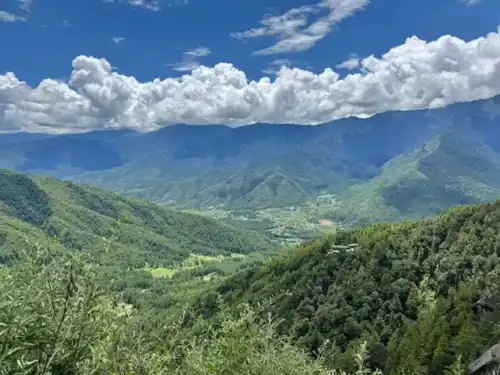
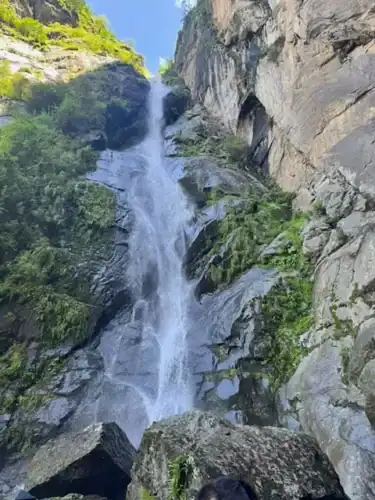
Every time I see pictures of Phobjikha Valley, I feel instantly relaxed. There’s something so genuine about the landscape — it’s not overly dramatic, just beautifully natural. It’s the perfect reminder of how peaceful the world can be.
Wonderful to learn about your time in this amazing country! Thank you!